Outbrain Optimization Rules to Limit Risk, Increase Upside
This is a guide that focuses on data-driven optimization of Outbrain campaigns.
Several examples are provided; these are for illustration purposes only. There is a certain amount of “data discovery” that you will go through figuring out what your upper and lower limits on data before making an adjustment.
The screen shots are from Brax; however, you can apply these in Outbrain Amplify - I just find it tedious and time consuming.
Requirements to Successful Optimization
There are two cardinal items that must be setup correctly for you to profit from native ads.
- Campaign Tracking
- Conversion Tracking (Pixel Setup)
If you don’t have these setup correctly, you are dead in the water. I cannot stress this enough, do not implement any of this without proper tracking in place and verified. Trustworthy data is the cornerstone to success.
For more information see Outbrain campaign tracking guide and conversion setup.
Optimization Fundamentals
First a general rule of thumb is to apply optimizations at the campaign level; not the account level. There are certainly exception to this rule; however, this guide is based on campaign adjustments.
Second, we recommend allowing campaigns spend at least $10 before making any optimizations.
Third, this guide is based around cost per action “CPA” rules, understand this action can be anything:
- Click to landing page
- Time on site
- Watched % of video
- Email submit
- Lead generated
- Sale
- etc
Literally anything as long as you are tracking the action.
These are guidelines to get you started in the right direction, adjust according to your style, workflow and budget.
Fourth, these optimizations are at the section level, a specific area on a publisher website with Outbrain ads.
Another important thing to remember is optimization rules break down into two components: action and conditions. The action is the change you want to make such as blocking a section or changing a section bid. The conditions is the criteria for the action to take place.
Now that we have all that out of the way, onto the good stuff.
Block Sections with No Conversions:
This is the first rule I recommend to everyone; cuts the fat to instantly boost return on ad spend (ROAS).
Action:
Block Sections
Conditions:
Section Spend is greater than $150 (3 x $50 goal CPA)
Section conversions equals 0
Example Setup in Brax
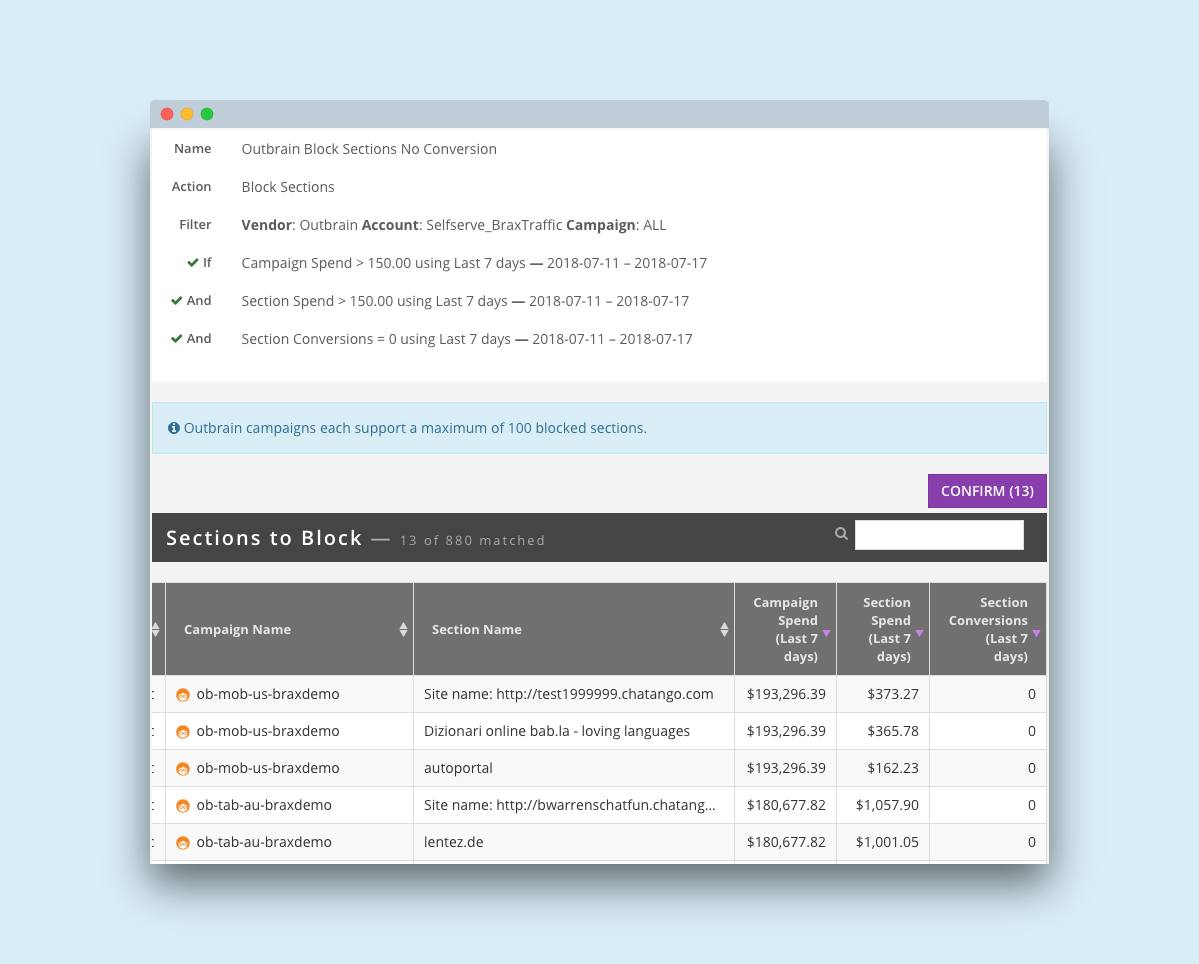
Block Sections with No Sessions:
This is a rule that basically looks for “invalid traffic” that could be anything not executing javascript such as bots, people browsing without javascript and ad block users. The key to this working is having analytics setup and an easy way to match the data back to the ad spend.
I recommend using Google Analytics for this; even if you don’t use it for conversion tracking. Another alternative is to use a click tracker (Voluum, Thrive, etc) and base it on clicks from the landing page to another page. This is often called LP CTR or landing page click thru rate.
Action:
Block Sections
Conditions:
Section clicks is greater than 10
Section sessions equals 0
Example Setup in Brax
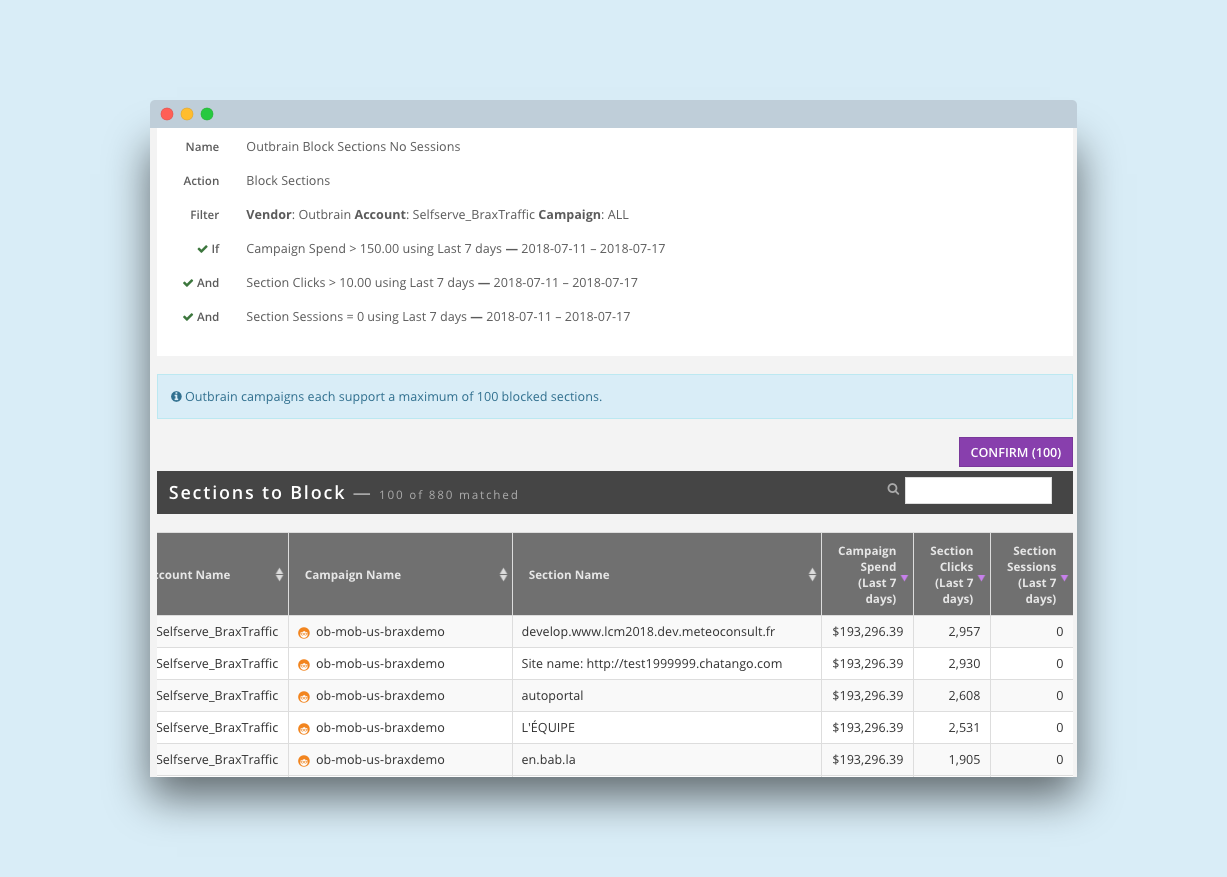
Here is an alternative approach using the calculation, invalid traffic = clicks/sessions - 1
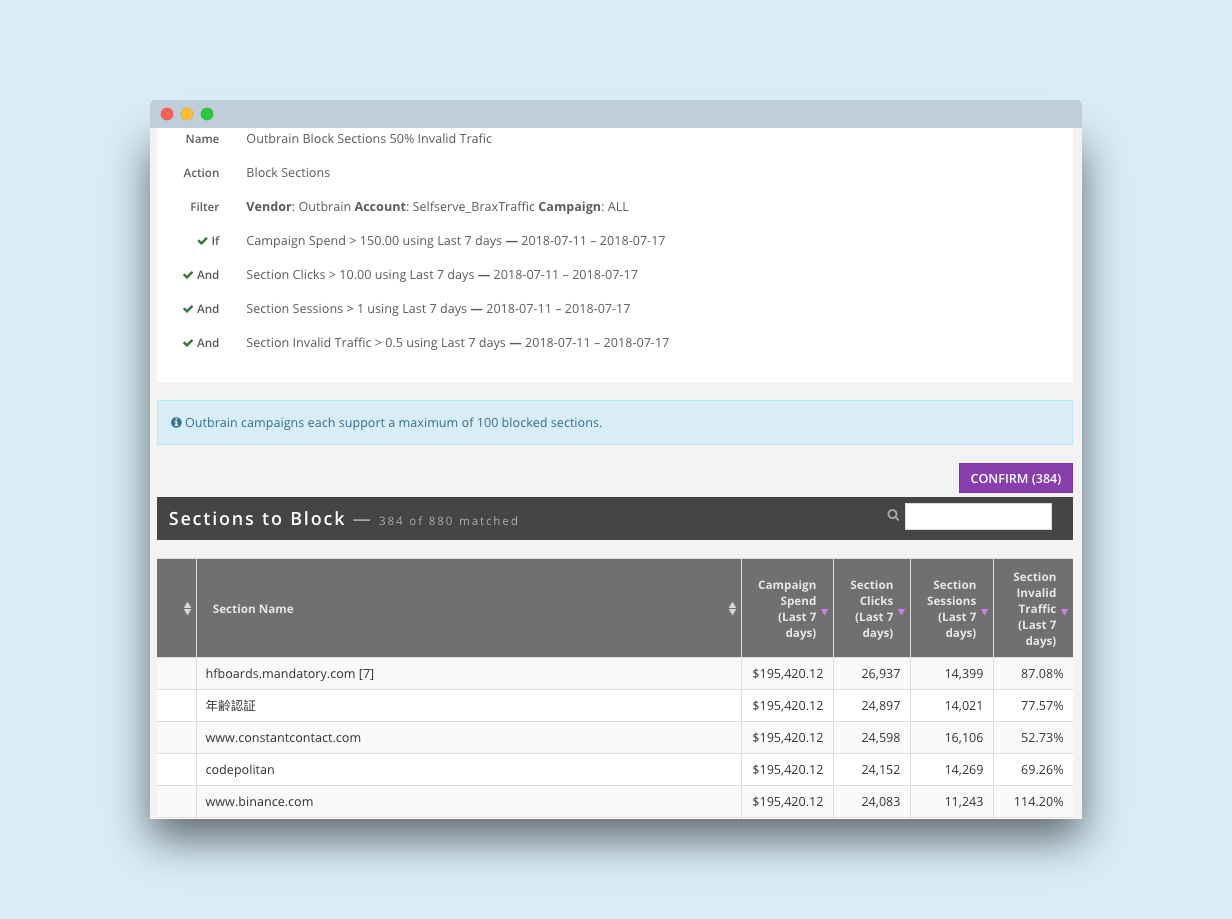
Block Sections with High CTR:
Typically the higher your CTR the better; because it helps you bid lower while still being competitive in the ad auction. The flipside is sometimes CTR is suspiciously high in the double digits; this could mean a bot is clicking on specific site placements or you have a possible hit ad creative.
Consider this an optional rule and test it heavily to get comfortable. I usually recommend aiming for an ad creative CTR of 0.50%, so the rule is looking at 20% which is 50x better. The impressions is at 1k because I don’t want something with 2 clicks on 10 impressions getting blocked because it is too early and there might be a data delay.
Action:
Block Sections
Conditions:
Section Impressions is greater than 1,000
Section conversions equals 0
Section CTR is greater than 20% (ex: 200 clicks on 1,000 impressions)
Example Setup in Brax
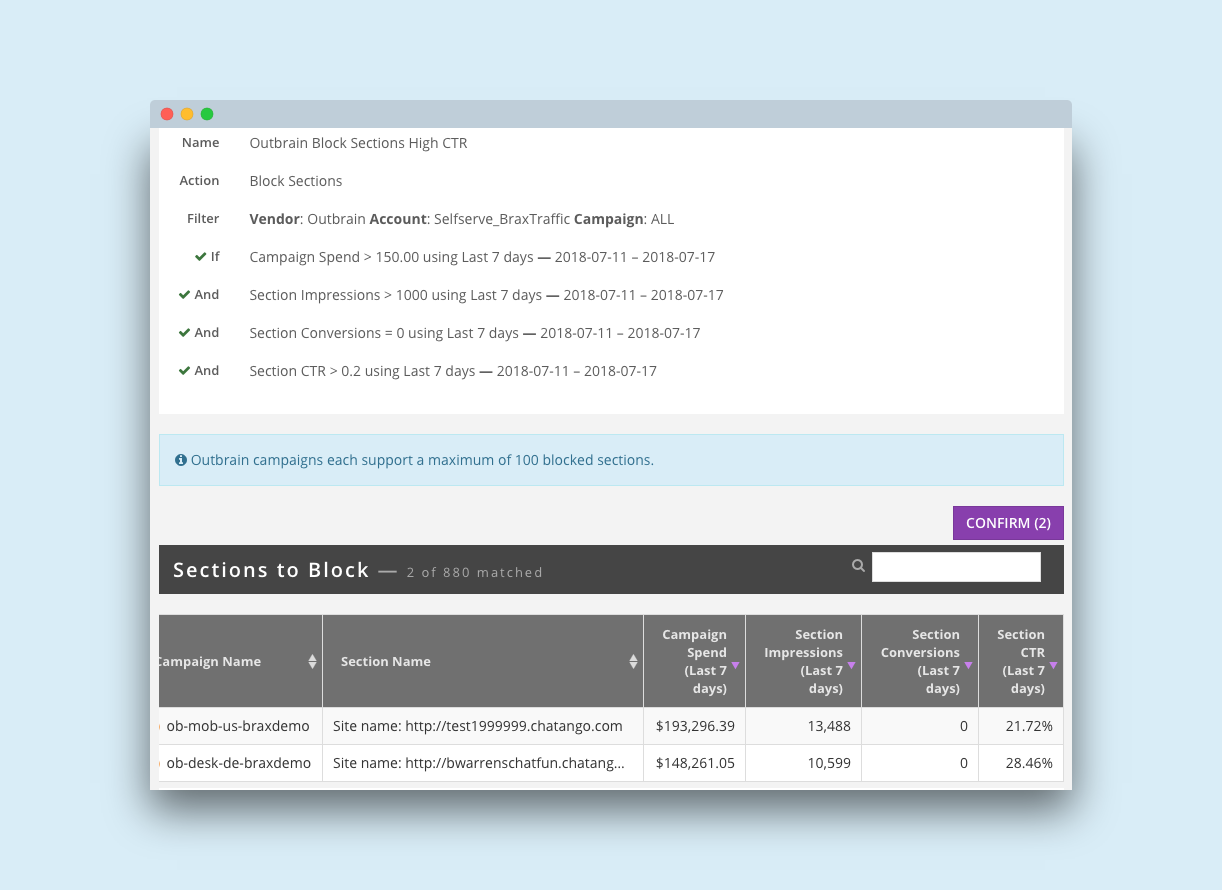
Decrease Bid on Sections Above CPA:
Before blocking a section completely, it is worth lowering the bid on it to see if that gets to the CPA goal. In this rule we are lowering the bid 25% after 2x the goal CPA is spent. You might also use multiple tiers (two rules) of this kind, such as, a 20% decrease after CPA goal spend, then a second rule to decrease another 20% after 2x CPA goal spend.
Action:
Decrease Section bid 25%
Conditions:
Section spend is greater than $100 (2x $50 CPA goal)
Section CPA is greater than $100 (2x $50 CPA goal)
Example Setup in Brax
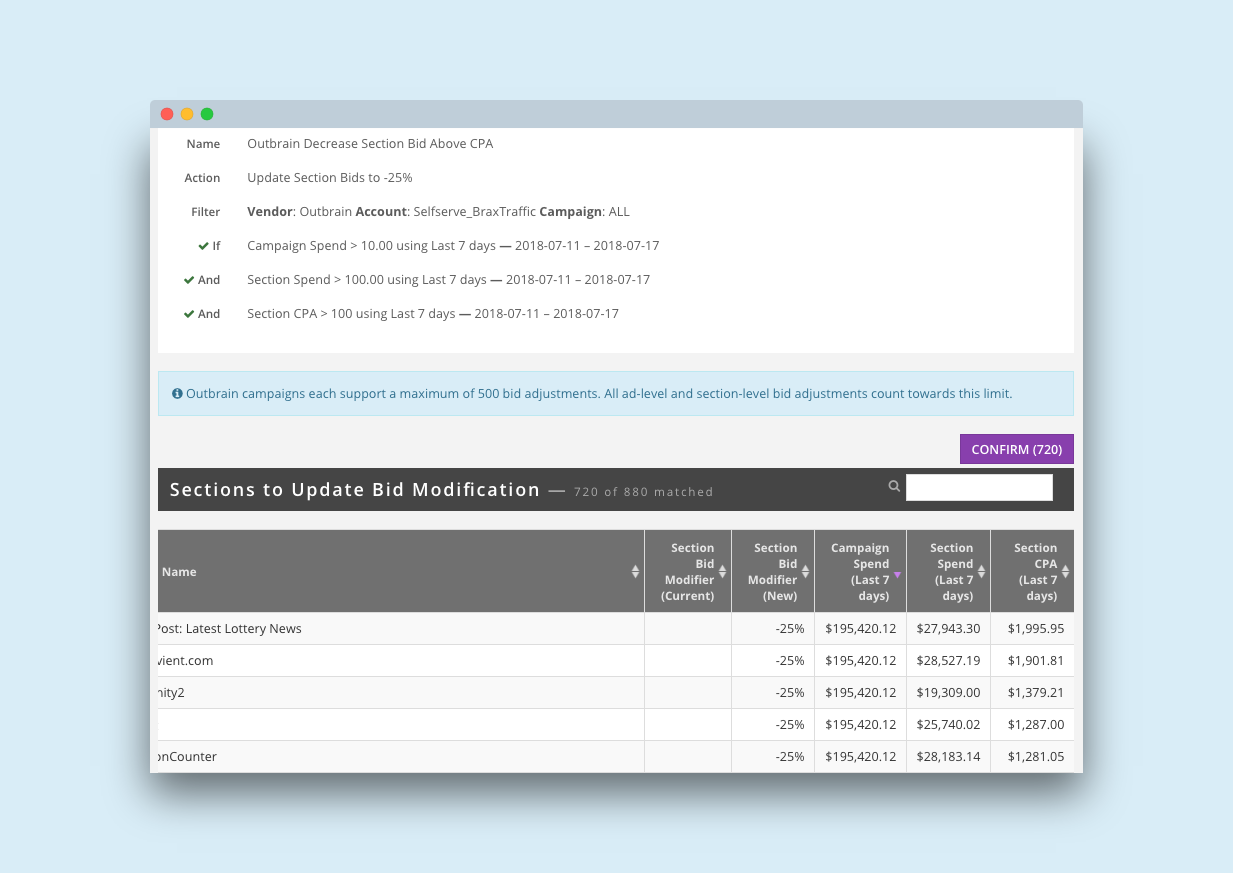
Increase Bid on Sections Below CPA:
This rule is aimed at getting more volume from a section that performs well by bidding slightly higher. The idea being you will be in a higher position on that publication which can subsequently increase CTR. You want to exercise caution and increase the bid slowly so a profitable section does not turn upside down.
Action:
Increase Section bid 10%
Conditions:
Section spend is greater than $100 (2x $50 CPA goal)
Section CPA is less than $40 (20% below $50 CPA goal)
Example setup in Brax
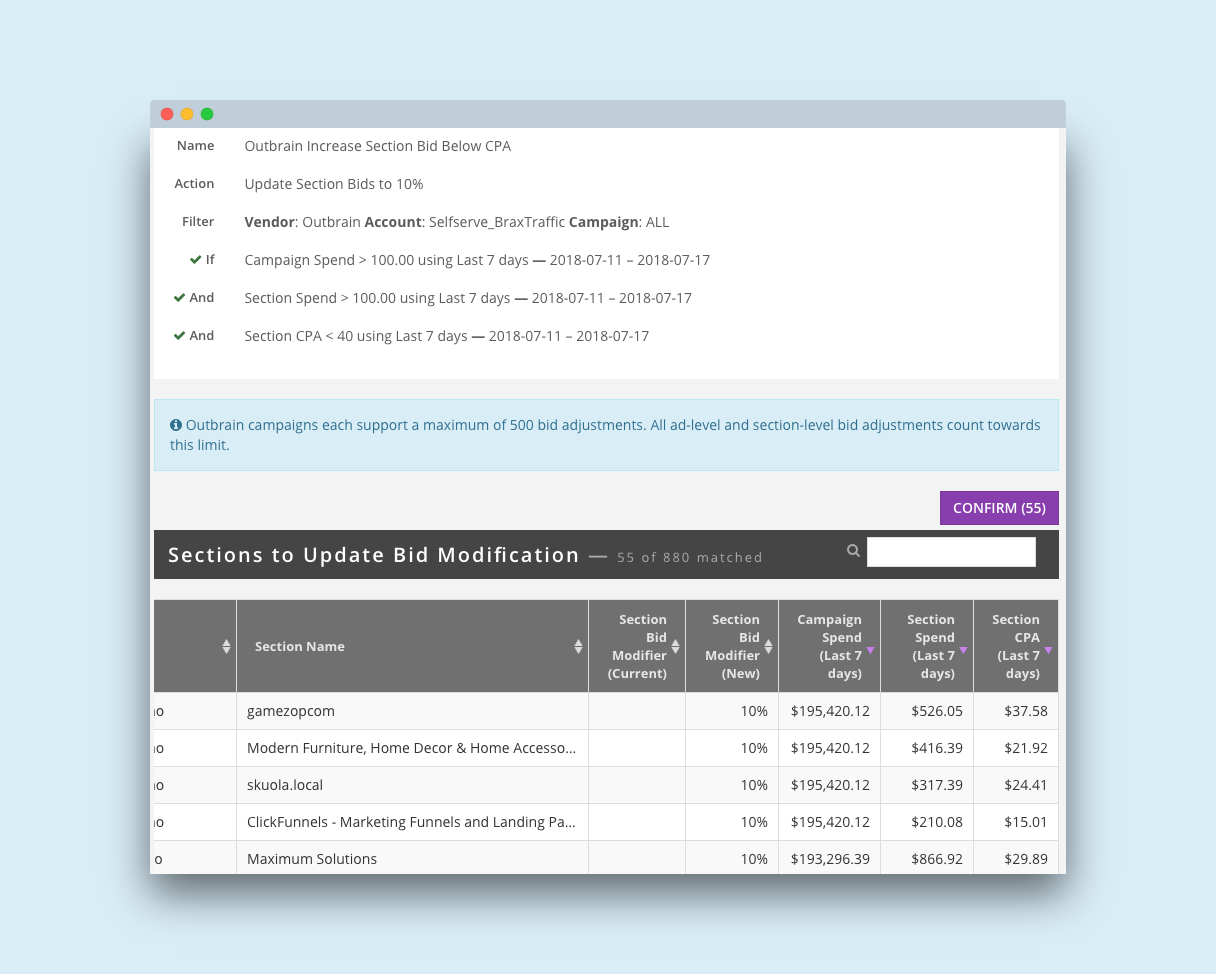
Measure Section CPM
Remember that Outbrain is an auction that aims to maximize the cost per thousand impressions (CPM) for each section. So if an ad creative has a high CTR on one section and not another then it will show more on the first section.
This is why you may see a top spending ad that does not have the highest overall CTR, because other publisher sections with lower CTR drag it down.
The calculation for CPM (set this up in Brax):
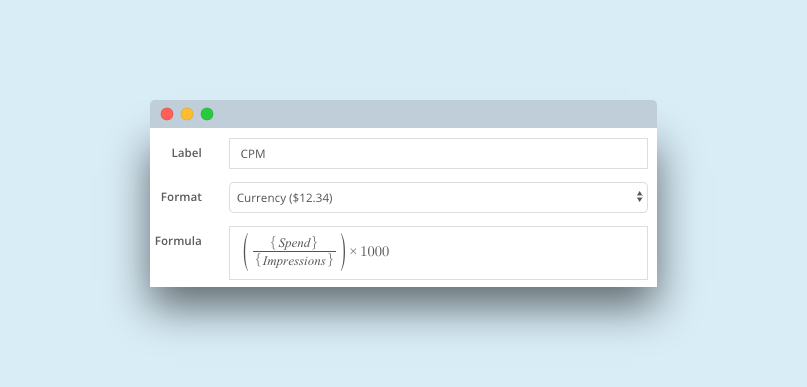
Then see it at the section level and use in rules for optimization:
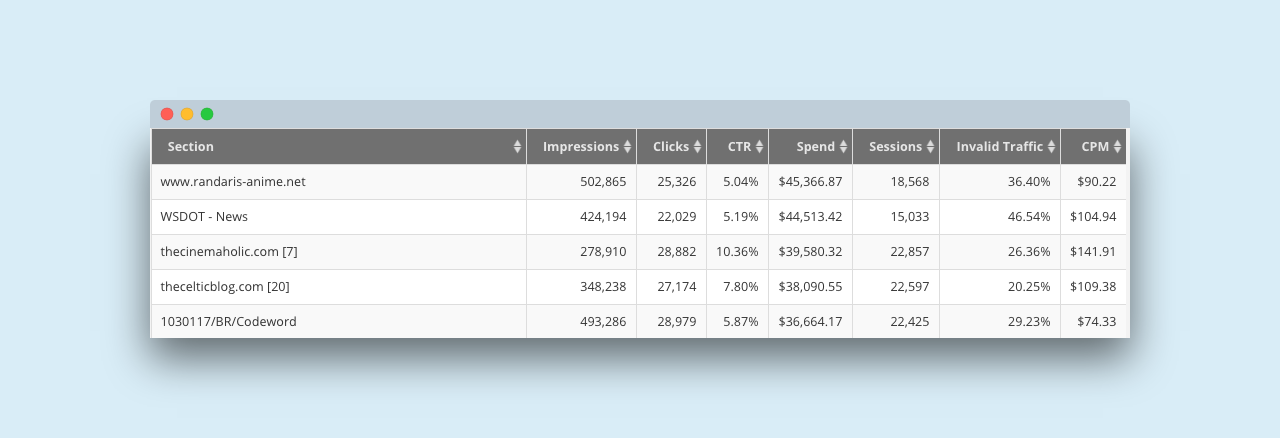
Frequently Asked Questions
Use these rules as a starting point to streamline your campaign optimization efforts leveraging performance data.
Many of the questions don’t have a straightforward answer without insight into your business metrics so consider it general guidance. Budget is a big factor to determine how long to look back (last 7 days vs 14 days) and minimum spend before optimizing.
How many days back should I look?I recommend at least 7 days at a minimum; with up to 30 days if your conversion window is longer and budget allows. Small budgets need longer time frames usually.
In addition, try looking back 60 or 90 days to see what shows up.
What should my minimum spend for campaigns/ads/publishers before I pause/block/adjust?I recommend a campaign spend of $10, ads & publisher spend of $5 at a minimum. You should have a CPA goal (or similar replacement) and base it on 3x the cpa goal. For example $10 cpa goal use a minimum of $30 for campaigns/ads/publishers before adjusting. The common exceptions are obvious fraud or poor performance.
How often should I run a rule?This really depends on how much you are spending; because a small budget won’t have enough new data each day. On the other hand, spending thousands per day may warrant running every day.
A good rule of thumb is once a day to catch new placements that need blocked and once a week for bid adjustment rules.
Final Thoughts
Usually the best approach to optimization is to methodically go from manual to automated process. If you have not done the optimization manually yet, automating it will likely make a mess.
Bill Gates is credited with saying:
"...automation applied to an efficient operation will magnify the efficiency... automation applied to an inefficient operation will magnify the inefficiency."
At the same time, you need stop gaps in place to limit risk. Hopefully this guide will inspire you to put in place some stop gaps.
Once you have defined, tested and trust rules then you are ready to automate. Here is a guide to automating rules.

